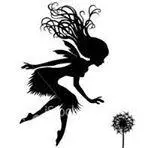Please scroll down for an English review.
כששומעים את המילים "המוות השחור", קל לדמיין רק חושך, מוות ודיכאון היסטורי.
אבל מי שמכיר את דורסי ארמסטרונג יודע , זו לא רק היסטוריה של מגפה, אלא של שינוי.
הספר הזה אוסף מחקרים עכשוויים על המגפה השחורה, ומשלב בין מקורות היסטוריים לעדויות מדעיות חדשות. הוא לא מסתפק בסקירת תמותה , אלא חושף איך נגיף עתיק אחד הפך למבחן לחץ היסטורי, כזה שמאיר את כל קווי השבר של החברה האנושית.
ארמסטרונג לא מספרת את סיפור המגפה כרצף של אסונות ביולוגיים, אלא כפריזמה: דרך להבין את המבנים החברתיים שקרסו, התעצבו, ושינו את פני ההיסטוריה.
בדומה לקורונה בימינו, המגפה לא רק פגעה בגוף , היא ערערה את הרקמות העדינות של החברה. היא שימשה ככלי לחשיפת כשלים מובנים , חוסר שוויון, עוני כרוני, היררכיות נוקשות , שהפכו לבלתי ניתנים להדחקה ברגע שהשיטה כשלה.
לא האנשים היו הבעיה , אלא המערכת כולה.
אובדן החיים היה עצום , אבל גם אובדן הידע. מתו בעלי מלאכה, אמנים, אדריכלים , לעיתים לפני שהספיקו להכשיר דור המשך. לא רק גופות נקברו, אלא גם מסורות.
ובכל זאת , לא הכול היה חושך. מתוך ההרס צמחו גם הזדמנויות. שורדים מצאו את עצמם, לראשונה, בעמדת מיקוח. אפשר היה לדרוש שכר, לבחור בני זוג ממעמד אחר, לעזוב את האחוזה.
זו הייתה תחילת קריסת המודל הפיאודלי , והסימנים הראשונים לשוק עבודה מודרני.
המעמד הבינוני החל לצמוח. נולדו בעלי מלאכה עצמאיים, סוחרים, חיבורים בין אצולה לבורגנות. החברה התחילה לזוז.
אבל המגפה לא נעלמה. היא חזרה שוב ושוב , כל דור התמודד עם אובדן כאילו בפעם הראשונה. ובכל גל , גם הסתגלות. ערים החלו להקים מוסדות בריאות, בתי מחסה, עמותות צדקה , אבני היסוד של מה שיהפוך בעתיד למערכת רווחה ובריאות ציבורית.
כך, בין מוות להזדמנות, בין פיצול גנטי של חיידק לבין קריסת מבנים חברתיים, מציעה ארמסטרונג ניתוח שלא רק מתבונן לאחור , אלא מהדהד קדימה.
כי אם יש לקח מהמוות השחור, הרי שהוא זה: מגפה אינה רק אסון רפואי. היא מראה, מגדלור , וזרז.
השאלה היא מה נבחר לראות בה, ואיך נבנה את העולם אחריה.
וזה לא מקרי שהספר נכתב בשיאה של מגפת הקורונה , ההקבלות כמעט בלתי נמנעות.
הכתיבה אינטליגנטית, נגישה ולא מתחנפת.
לא עוד מאמר אקדמי שהולבש לו כריכה , אלא ספר חכם לקוראים חכמים, גם בלי תואר בהיסטוריה של אירופה.
בשורה התחתונה?
אם אתם רוצים להבין לא רק מה קרה , אלא איך מגפות מעצבות מחדש את האנושות ,
The Black Death הוא ספר מעניין.
לא סנסציה, אלא תובנה.
וספר שנשאר איתך גם אחרי הסגירה , לא בגלל הפחד, אלא בזכות ההבנה.
The Black Death: New Lessons from Recent Research/ Dorsey Armstrong
Audiable Edition,3 H, 2022
דירוג SIVI –
איכות אודיו –

When the words "The Black Death" appear in a title, it’s hard not to expect sheer historical gloom.
But if you’re familiar with Dorsey Armstrong, you know she never settles for describing a plague; she insists on asking what it does to a society, and what remains after the bodies are buried.
This book compiles cutting-edge research on the Black Death, blending historical sources with new scientific insights. It offers a panoramic view, not just of death, but of transformation. One ancient bacterium didn’t merely decimate villages and cities; it also exposed, with brutal precision, the fault lines already running through medieval society.
Armstrong doesn’t just revisit the Black Death; she dismantles it. Not as a sequence of biological disasters, but as a prism through which to understand the collapse and reconstruction of social structures.
Much like COVID in our own time, the plague didn’t merely harm the body; it frayed the delicate tissues of human systems. It served as a spotlight, revealing systemic failures, chronic poverty, social rigidity, inequality, that became impossible to ignore once the framework cracked. The problem wasn’t the people,it was the system.
Among the dead were not only peasants, but also artisans, architects, and creators. The loss of knowledge during this period was catastrophic; not only were lives buried, but entire crafts and traditions, cut off before a new generation could be trained.
And yet, not everything was bleak. Out of devastation, lives were buried, but entire crafts and traditions were affected; new opportunities emerged: for many survivors, it was the first time they could choose their path, demand fair wages, or marry outside their class.
It was the crumbling of the feudal model, the early signs of a modern labor market., not
But trauma, of course, didn’t vanish. The plague returned in waves, again and again, each generation confronted loss as if for the first time. And with each wave, society rebuilt itself in a different way. Cities began to establish health institutions, almshouses, charity, and charitable organizations,the early infrastructure of what would become national public health systems.
Between death and renewal, between a genetic mutation and a social collapse, Armstrong offers a sharp, forward-looking analysis.
Because if the Black Death teaches us anything, it’s this: a pandemic is not just a medical event, it is a mirror, a lighthouse, and a catalyst. The question is what we choose to see in it, and what we build once it recedes.
It’s no coincidence the book was written during the height of COVID; the parallels are impossible to ignore.
The writing is intelligent, accessible, and refreshingly unsentimental.
This isn’t just an academic article with a dust jacket; it’s a thoughtful book for thoughtful readers, no PhD required.
Bottom line?
If you want to understand not just what happened, but how plagues reshape humanity, The Black Death is essential reading.
Not sensationalism, insight.
And not just about then, but also about now.
לגלות עוד מהאתר Sivi's Books
Subscribe to get the latest posts sent to your email.
